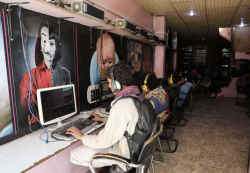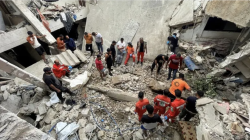Covid: The countries that nailed it, and what we can learn from them
- 2021-03-22 21:58:16


 Pierre Rayer: Art, Science, and Happiness: The Universal Mission of Transmission to Future Generations through Patronage at the Louvre Abu Dhabi
Pierre Rayer: Art, Science, and Happiness: The Universal Mission of Transmission to Future Generations through Patronage at the Louvre Abu Dhabi Ahly crowned Super champions after dramatic extra-time win over Modern Future FC
Ahly crowned Super champions after dramatic extra-time win over Modern Future FC Yemeni Honey..A Development Wealth Threatened By Conflict And Climate Change
Yemeni Honey..A Development Wealth Threatened By Conflict And Climate Change California wildfires: Millions warned of possible power cut
California wildfires: Millions warned of possible power cut Central African rebels launch attacks near capital
Central African rebels launch attacks near capital Global Internet Outage Disrupts Websites Worldwide, Including Yemen
Global Internet Outage Disrupts Websites Worldwide, Including Yemen Lebanon says 11 killed in Israeli strike on Sidon
Lebanon says 11 killed in Israeli strike on Sidon Yemen Crushes Bhutan 7–1 in AFC Asian Cup Qualifier
Yemen Crushes Bhutan 7–1 in AFC Asian Cup Qualifier Louvre Museum Closes Greek Ceramics Gallery Weeks After Major Jewel Heist
Louvre Museum Closes Greek Ceramics Gallery Weeks After Major Jewel Heist Trump looks forward to welcoming Saudi Crown Prince to White House: US official
Trump looks forward to welcoming Saudi Crown Prince to White House: US official
